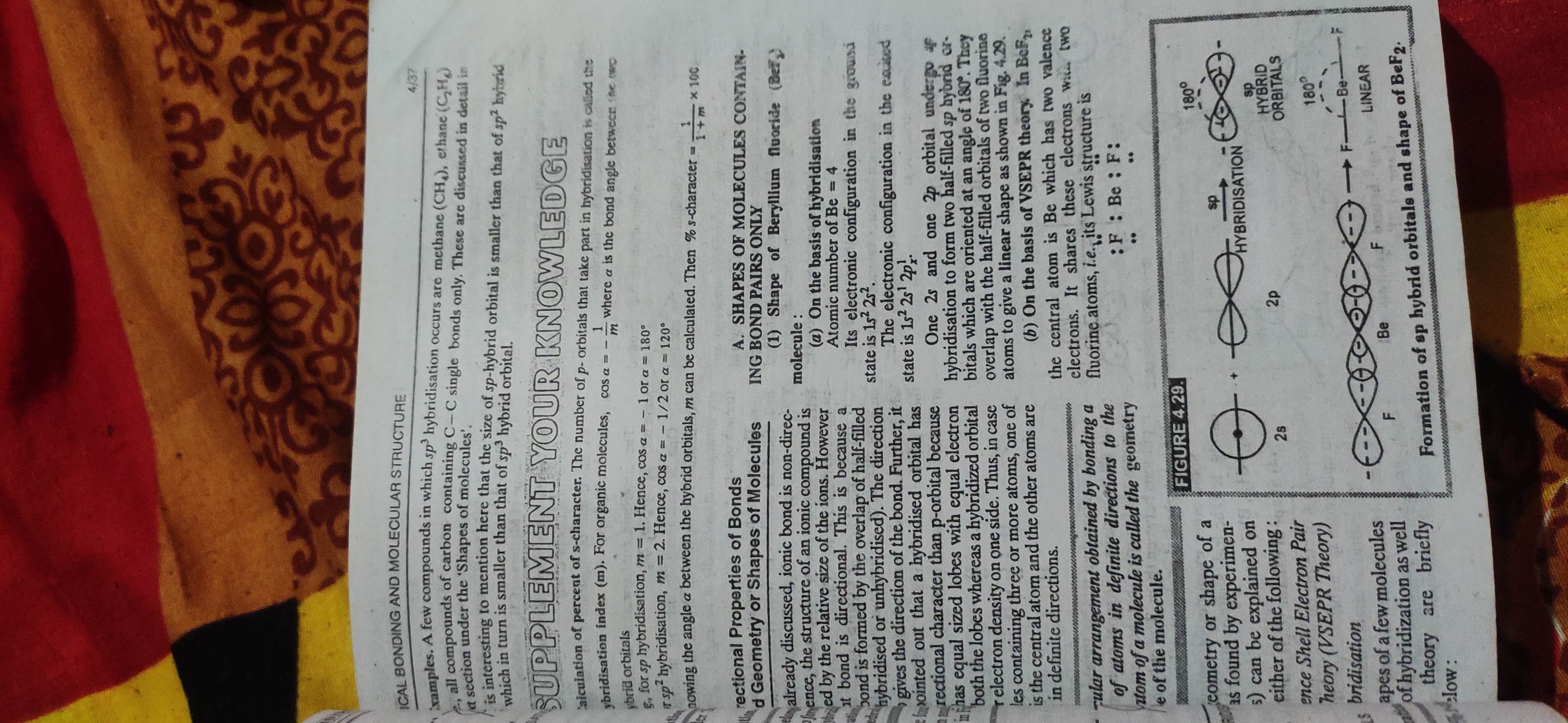What are the shapes of molecules containing bond pairs only, and how does hybridization play a role in determining these shapes?

Understand the Problem
The question is discussing the concepts of hybridization, particularly sp³ and sp hybridization, and their relevance in determining the shapes of molecules. It provides examples of compounds like methane and beryllium fluoride and explains the calculation of s-character in hybrid orbitals.
Answer
Linear, trigonal planar, tetrahedral shapes; hybridization determines these.
The shapes of molecules containing bond pairs only include linear, trigonal planar, and tetrahedral. Hybridization determines these shapes by mixing atomic orbitals to form hybrid orbitals, influencing molecular geometry.
Answer for screen readers
The shapes of molecules containing bond pairs only include linear, trigonal planar, and tetrahedral. Hybridization determines these shapes by mixing atomic orbitals to form hybrid orbitals, influencing molecular geometry.
More Information
Hybridization involves mixing different types of orbitals (s and p) to form new, hybridized orbitals that affect molecular shape and bond angles.
Tips
A common mistake is confusing hybridization types with the number of electron pairs rather than focusing on bond pairs specifically.
Sources
- Shapes of Molecules - VSEPR Theory and Valence Bond Theory - chem.libretexts.org
- Hybridization - chem.fsu.edu
AI-generated content may contain errors. Please verify critical information